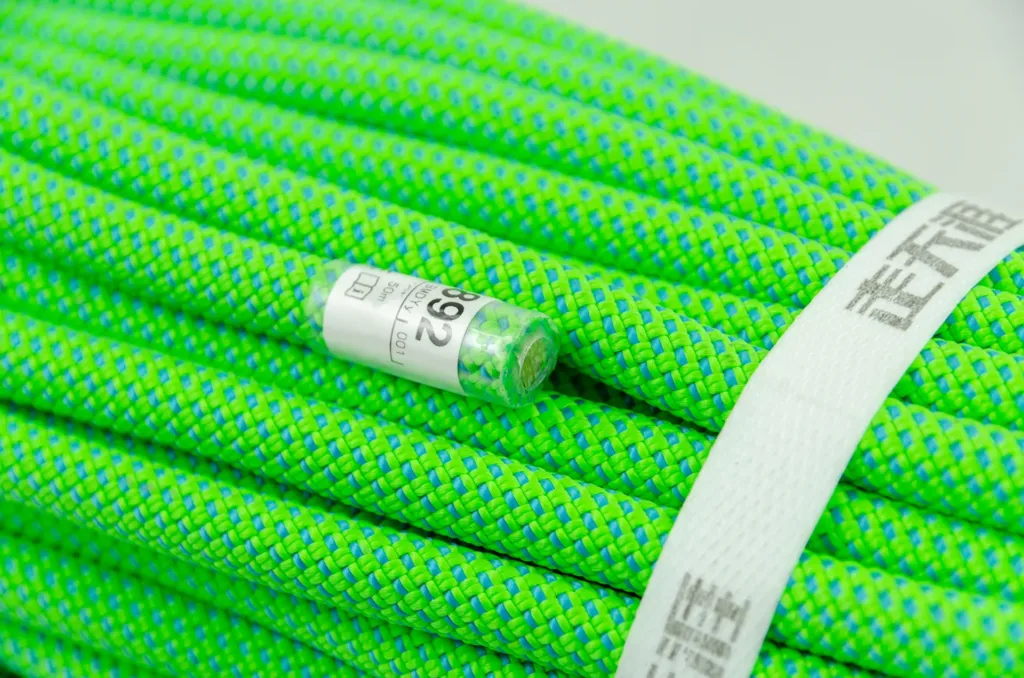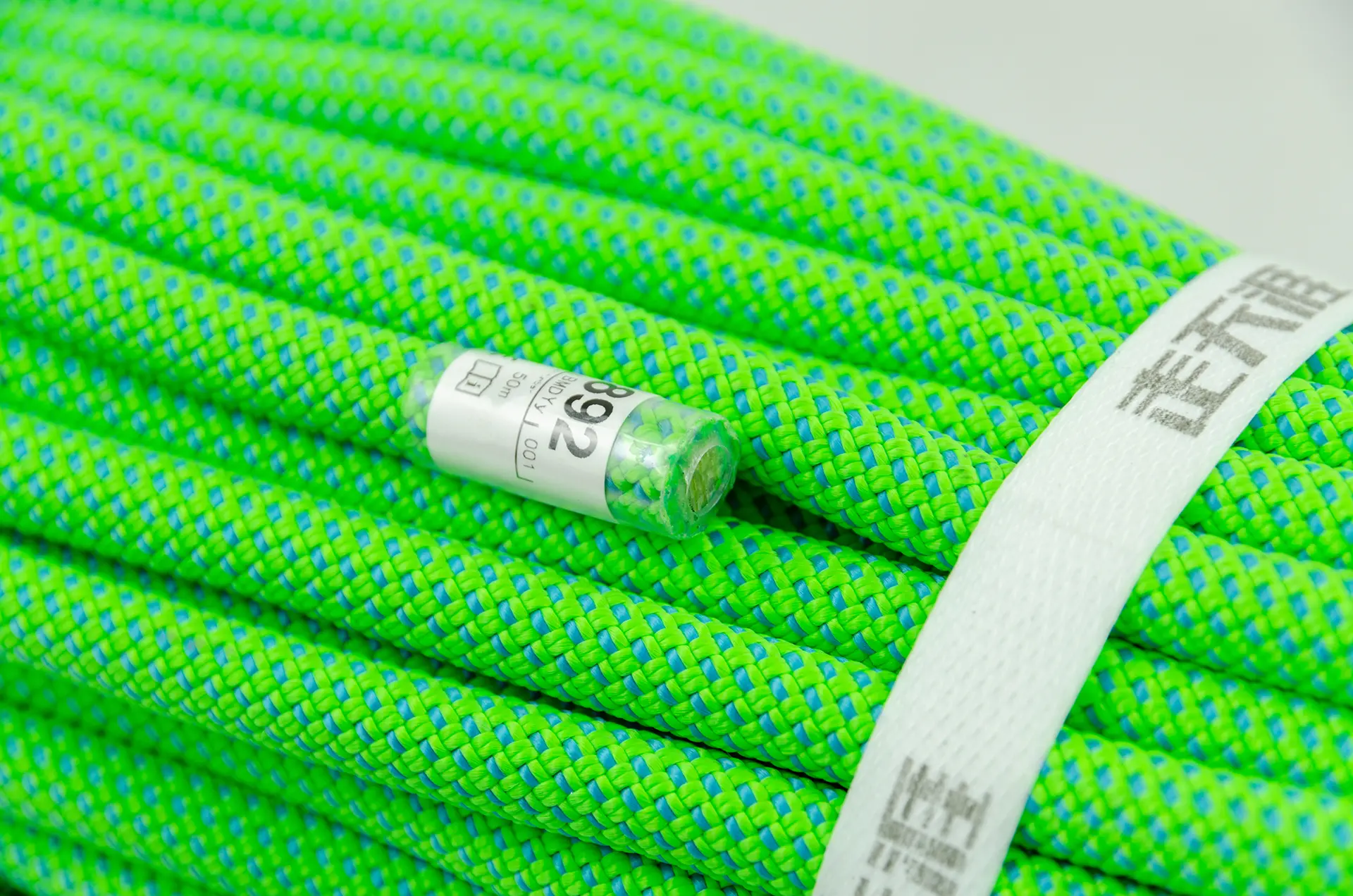How much weight does a climbing rope carry?

How much weight does a climbing rope carry? The weight capacity of a climbing rope is a crucial factor in mountaineering. Proper selection and use of appropriate climbing ropes can ensure your safety when performing mountaineering activities. This article will detail the weight capacity of a climbing rope and the important knowledge associated with it.
The weight capacity of a climbing rope depends on several factors:
- ROPE MATERIAL: Mountaineering ropes are usually made of synthetic materials such as nylon, polyester fiber (polyester) or aramid. These materials have excellent strength and abrasion resistance and are able to withstand high tensile forces.
- Diameter: The diameter of a climbing rope is also an important factor in its weight capacity. In general, ropes with larger diameters usually have a higher load-bearing capacity. Different types of climbing ropes have different recommended diameter ranges, usually between 1mm and 16mm.
- Manufacturing process: the manufacturing process of mountaineering rope is directly related to its strength and durability. High-quality mountaineering ropes utilize advanced braiding techniques and material treatments to ensure their load-bearing capacity and longevity.
- CONDITION OF USE: The condition of the rope also affects its weight-bearing capacity. It is important to regularly check the rope for wear, strength and damage. Worn and damaged ropes may reduce their load-bearing capacity and even lead to dangerous situations.
The load bearing capacity of a climbing rope is usually determined by its minimum breaking strength (MBS). Minimum Breaking Strength is the smallest force with which a rope will withstand rupture under standardized test conditions. The MBS of a climbing rope is usually labeled in thousands of Newtons (kN).
Common static ropes usually have an MBS between 18 kN and 40 kN, while auxiliary ropes usually have an MBS between 1 kN and 18 kN. These values are general references only, and the exact load bearing capacity will need to be determined based on the exact specifications of the rope and the manufacturer's instructions.
However, it should be emphasized that the load-bearing capacity of a climbing rope does not mean that you can use all the load-bearing power. The breaking tension of 22KN does not carry 2200 kilograms, which is usually calculated according to the safety factor of 10:1-20:1, so a rope with a breaking tension of 22KN is safer to carry 110kg-220kg. In actual mountaineering, other factors need to be considered when using a climbing rope, such as the degree of wear and tear of the rope, the way the rope is knotted, and the safety of the carrying point.
In addition, the load-bearing capacity of the climbing rope is not the only factor to be concerned about. There are also several important safety principles to consider in mountaineering:
- Use the right rope: Choose the appropriate type and size of climbing rope according to the specific climbing activities and route requirements. Different types of climbing ropes have different characteristics and uses, such as static, power and auxiliary ropes. Make sure the rope you choose meets the needs and safety standards of the activity.
- PROPER USE AND MAINTENANCE: Familiarize yourself with the proper use of the rope and follow the manufacturer's guidelines for use and maintenance. Regularly inspect the rope for wear, damage and kinks and promptly replace or repair damaged sections. Keep the rope clean and dry and avoid exposure to sunlight and chemicals.
- Reasonable load distribution: When using a climbing rope, it is crucial to distribute the load properly. Spread the load evenly over multiple load points and avoid over-concentration on a single point to minimize stress on the rope and load points.
- Sturdy load points: Ensure that sturdy and reliable load points are selected, such as fixed rock anchors or reliable rope attachment points. Where artificial anchors are used, ensure that they are properly installed and tested to ensure their stability and reliability.
- Appropriate protection: Use appropriate protective devices such as rope covers, rope pads, etc. when it is necessary to protect the rope from friction and abrasion from sharp or rough surfaces.
Please note that the above information is for reference only and does not cover all knowledge of the load bearing capacity and safe use of mountaineering ropes. Before undertaking any mountaineering activities, please ensure that you have adequate mountaineering experience and follow professional mountaineering safety guidelines and advice. It is also wise to consult a professional mountaineering instructor or an experienced mountaineer for more accurate and detailed information. Safety is always one of the most important factors in mountaineering activities and should never be neglected.
Latest Outdoor Tutorials
ZOUTIANYA will regularly update the outdoor tutorials to bring easy-to-understand knowledge to our customers!





 Network Security No. 32120302000350
Network Security No. 32120302000350